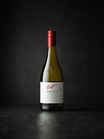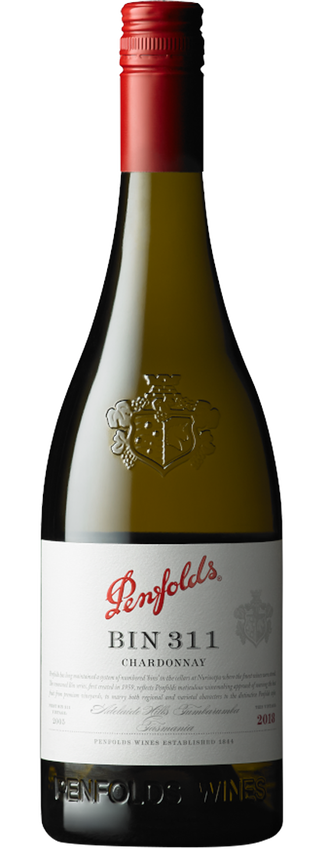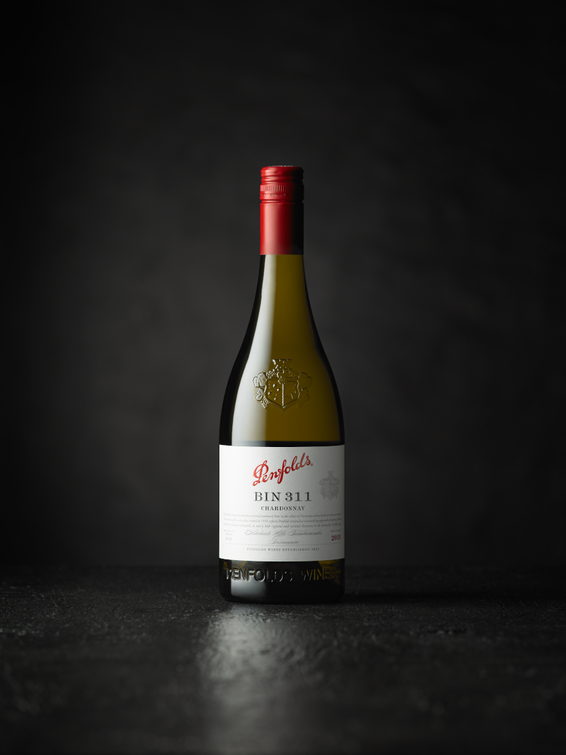Penfolds
2018 Penfolds Bin 311 Tumbarumba Chardonnay
Tasting Notes
Tasting Note
Color
Light straw
Nose
Full-flavoured, endowed with a concentrated fruit spectrum of citrus, grapefruit and white peach.
Hints of sherbet, camomile and goats cheese complex the aromatic offer – a chardonnay cast assembled from three States of Australia.
Certainly, there’s quite the performance happening in the glass, with barely a swirl of the glass and some air required to light up the stage!
Palate
First and foremost, this wine extolls freshness, yet not at the expense of an endearing richness and generosity of flavour.
Whilst some may perceive it to be slightly ‘larger-framed’ than in previous years it nevertheless retains trademark Bin 311 mineral acidity and linearity.
Rockmelon and white peach fruits are pronounced. Underlying sherbet and fresh lemon tart impressions coupled with a lovely creaminess add to the structural and flavour pool.
A trademark Penfolds phenolic grip certainly doesn’t curtail length or volume. Yes, proactively rich, fresh and assertive! Drinkability? Do we have to wait?!
Technical Information
| Varietal | Chardonnay |
|---|---|
| Vintage | 2018 |
| Appellation | Bin 311 Tumbarumba |
| Blend | 100% Chardonnay |
| Oak Treatment | 10 months in French oak barriques (30% new, 20% 1-y.o., 50% seasoned) |
| Alcohol % | 13% |
| Enclosure Type | Screwtop |
| pH | 3.19 |
Scores & Accolades
-
95
JamesSuckling.com
“This moves into refined and very striking style with a wealth of lemons, white peaches and nectarines on offer, as well as nicely curated hazelnut-oak. The smoothly honed palate has deep-set peach flavors and a succulent, cool-mineral and grapefruit finish. The finest Bin 311 to date."
- James Suckling, JamesSuckling.com, August 2019 -
92
Jeb Dunnuck
“Deeper and richer, the 2017 Chardonnay Bin 311 was sourced from multiple regions in South East Australia and was brought up in barrels, some being new. Perfumed notes of white grapefruit, caramelized citrus, white flowers, and a terrific sense of salty minerality all emerge from this layered, medium-bodied effort. With bright acidity, a supple, layered texture, and a great finish, it’s a complete, incredibly high-quality white from this terrific producer."
Joe Cerzinski, Robert Parkers Wine Advocate, August 2019 -
92
Robert Parkers, Wine Advocate
"The 2018 Bin 311 Chardonnay is a multiregional blend sourced from Adelaide Hills (43%), Tumbarumba and Tasmania—it was previously a single-region bottling. Essentially, it's now a blend of barrels that didn't make it into the Reserve Bin label from the Adelaide Hills and barrels from Tumbarumba and Tassie that didn't make the Yattarna grade. Fermented and aged in 30% new French oak (20% second use and 50% older), it reveals hints of vanilla buttercream on the nose, paired with notes of pineapple, orange, pear and melon. It's medium-bodied, plump and creamy across the palate, then crisp and focused on the finish."
Joe Cerzinski, Robert Parkers Wine Advocate, August 2019
Winemaking
Peter Gago - Chief Winemaker
Peter joined the winemaking team in 1989, initially in the craftsmanship of sparkling wines, before moving on to reds as Penfolds Red Wine Maker. In 2002 Peter became the fourth ever Chief Winemaker for Penfolds. Together with his fellow winemakers, Peter’s careful custodianship has ensured that Grange and the other ‘older’ members of the Penfolds family, have continued to set the benchmark for their style and quality, while new additions to the range push the boundaries ever wider.
Vintage
2018 Vintage
The 2018 Bin 311 showcases cool climate chardonnay from three of Penfolds favourite regions for this noble varietal, Adelaide Hills, Tumbarumba and Tasmania. All three regions enjoyed a relatively wet winter and spring which set the vines up well for the growing season. Tumbarumba had good rainfall right up to December, when a dry spell set in, while February temperatures were quite cool allowing for slow, consistent ripening. The Adelaide Hills had a very hot finish to the growing season with several heat spikes in January. Tasmania enjoyed clear and warm conditions over fruit set from January with no extreme heat days during the lead up to vintage. Harvest was an orderly affair, with grapes ripening evenly across the three regions. The grapes showed strong varietal character with desirable acidity.






